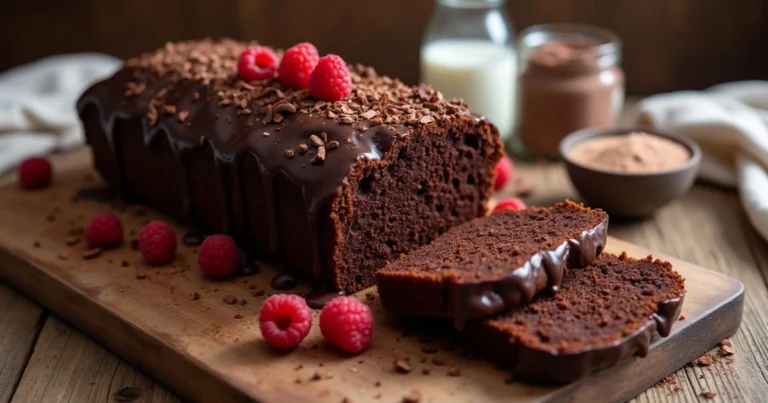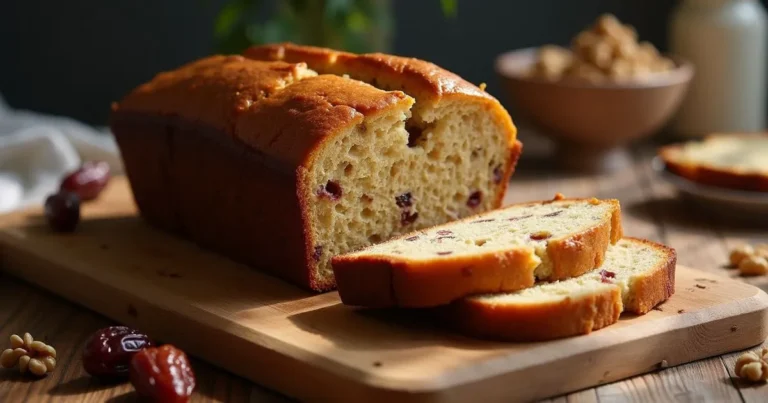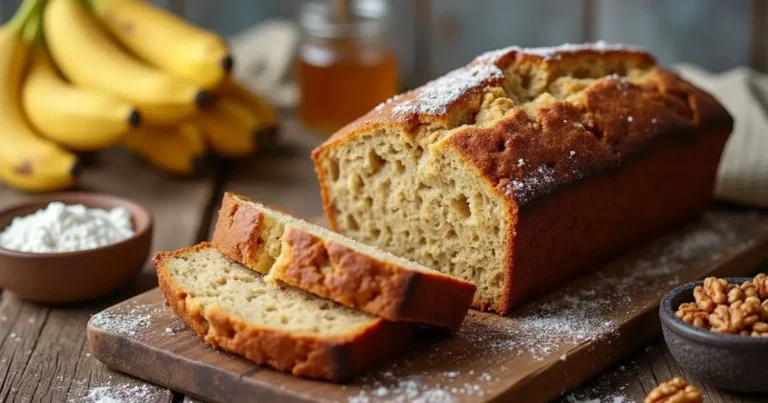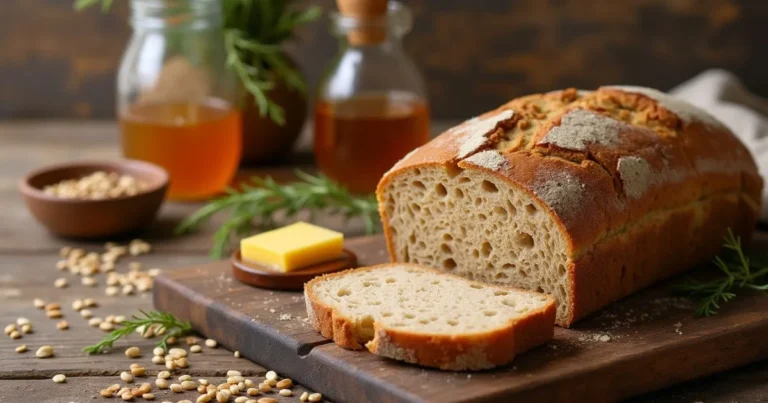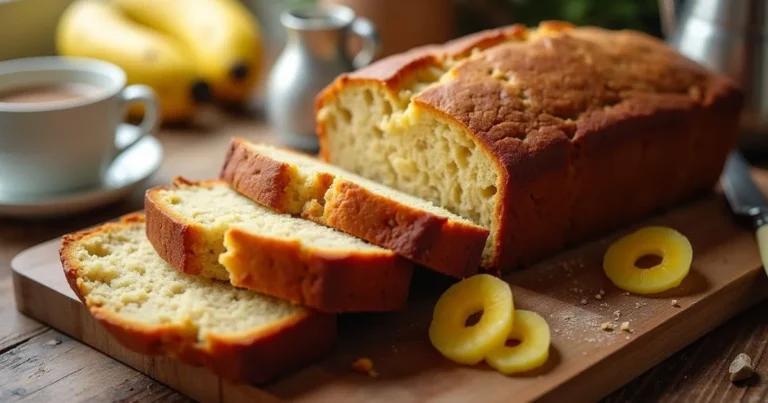How to Make Coconut Bread: Easy Recipes with Coconut Milk and Coconut Flour
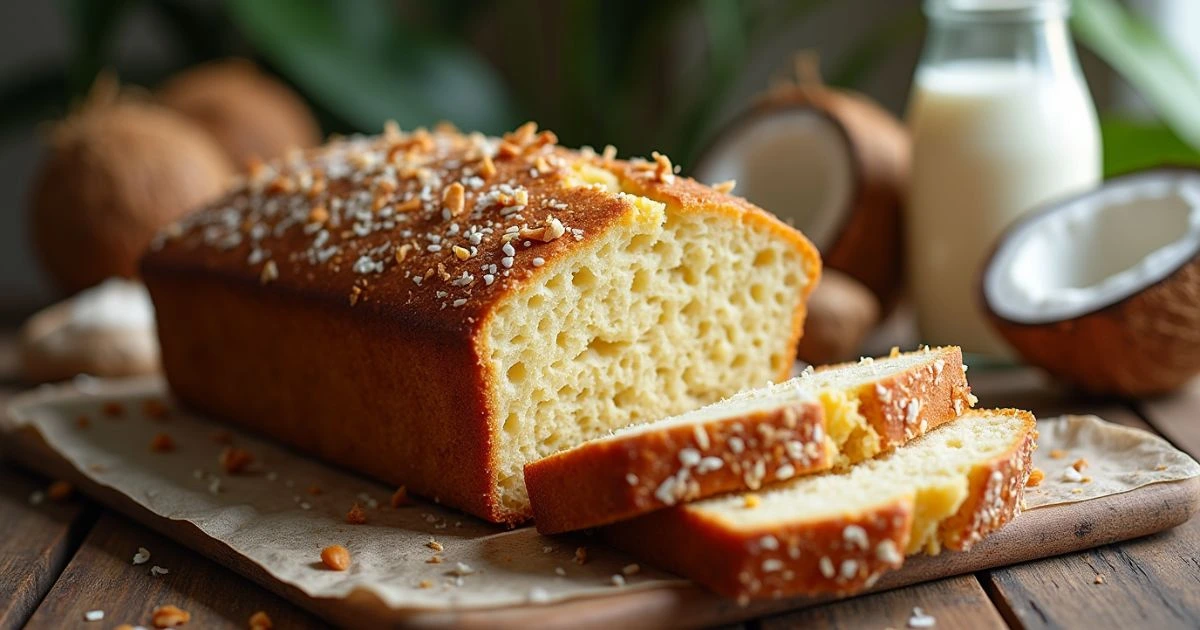
Imagine the warm, nutty aroma of freshly baked coconut bread filling your kitchen. Doesn’t it sound like the perfect treat for any time of day? Coconut bread is a delightful fusion of tropical flavor and wholesome goodness, making it a favorite for breakfast, snacks, or even dessert. Whether you’re a seasoned baker or someone new to the kitchen, this guide will help you master the art of baking coconut bread using coconut milk and coconut flour. Let’s dive in!
Table of Contents
What Is Coconut Bread and Why You’ll Love It
Coconut bread is a quick bread made with the natural richness of coconut-based ingredients, creating a moist and flavorful loaf. Unlike traditional breads, it doesn’t require yeast or extensive kneading, making it simple and convenient to prepare. But there’s more to this bread than just its ease.
Benefits of Coconut Bread:
- Unique Flavor: A subtle sweetness combined with a tropical flair makes it a standout choice.
- Health Boost: Thanks to coconut flour and coconut milk, it’s high in fiber and healthy fats.
- Diet-Friendly: Gluten-free and suitable for low-carb diets, it’s perfect for those with dietary restrictions.
With these benefits, it’s no wonder coconut bread has gained a loyal following among home bakers and food enthusiasts alike.
Essential Ingredients for Coconut Bread
Before you start baking, let’s go over the key ingredients that make coconut bread so special.
Coconut Flour: The Foundation of Your Bread
Coconut flour is a fine, powdery flour made from dried coconut meat. It’s gluten-free and incredibly absorbent, meaning you’ll use less compared to traditional flour. Additionally, it’s packed with fiber, which supports digestion and keeps you feeling full longer.
Coconut Milk: Adding Moisture and Flavor
Coconut milk adds richness and moisture to your bread, ensuring it doesn’t turn out dry. Whether you’re using canned coconut milk or a fresh homemade version, it’s an essential ingredient for achieving the bread’s signature texture.
Other Key Ingredients
- Eggs: Essential for binding the ingredients and giving the bread structure.
- Sweeteners: Natural options like honey or maple syrup enhance the flavor without overwhelming sweetness.
- Shredded Coconut (Optional): Adds texture and amplifies the coconut flavor.
Step-by-Step Recipe for Coconut Bread
Ready to bake? Follow this foolproof recipe to create your own loaf of coconut bread.
Ingredients Table:
| Ingredient | Quantity |
|---|---|
| Coconut Flour | 1 cup |
| Coconut Milk | 1 cup |
| Eggs | 4 large |
| Baking Powder | 1 teaspoon |
| Honey or Maple Syrup | 2 tablespoons |
| Shredded Coconut | 1/2 cup (optional) |
| Salt | 1/4 teaspoon |
| Vanilla Extract | 1 teaspoon |
Instructions:
- Preheat Your Oven: Set your oven to 350°F (175°C) and grease a standard loaf pan or line it with parchment paper.
- Mix Wet Ingredients: In a large mixing bowl, whisk together the eggs, coconut milk, honey (or maple syrup), and vanilla extract until smooth.
- Combine Dry Ingredients: In a separate bowl, sift together the coconut flour, baking powder, and salt.
- Blend Wet and Dry Mixtures: Gradually add the dry ingredients to the wet mixture, stirring until fully combined. The batter will be thick due to the absorbent nature of coconut flour.
- Fold in Shredded Coconut (Optional): Add shredded coconut if you prefer a chunkier texture.
- Bake: Pour the batter into the prepared loaf pan and spread it evenly. Bake for 40-50 minutes or until a toothpick inserted into the center comes out clean.
- Cool and Serve: Allow the bread to cool in the pan for 10 minutes before transferring it to a wire rack to cool completely. Slice and enjoy!
Tips for Perfect Coconut Bread Every Time
Even with a simple recipe, a few insider tips can elevate your coconut bread from good to great:


Measure Coconut Flour Accurately
Since coconut flour is highly absorbent, even slight variations in measurement can affect the texture of your bread. Use a kitchen scale for the best results.
Avoid Overmixing
Overmixing can lead to dense, dry bread. Mix just until the ingredients are combined.
Store It Right
Keep your coconut bread fresh by storing it in an airtight container at room temperature for up to five days. For longer storage, freeze slices individually and thaw as needed.
Variations and Add-Ins for Coconut Bread
Want to switch things up? Here are some variations to try:
Sweet Variations
- Chocolate Chips: Add a handful of chocolate chips for a dessert-like twist.
- Dried Fruits: Mix in raisins, cranberries, or chopped dates for added sweetness.
Savory Twists
- Herbs: Add fresh rosemary or thyme for a unique savory flavor.
- Cheese: Fold in shredded cheddar or Parmesan for a cheesy delight.
Frequently Asked Questions (FAQ)
Can I Substitute Regular Flour for Coconut Flour?
No, coconut flour is much more absorbent than regular flour, so a direct substitution won’t work. Adjustments to the liquid and eggs are necessary if you’re using a different flour.
How Do I Make Coconut Bread Vegan?
You can substitute eggs with flaxseed or chia seed gel and use a plant-based sweetener like agave syrup. Ensure your coconut milk is unsweetened for better control over the flavor.
Why Is My Coconut Bread Dry?
Dryness could result from using too much coconut flour or overbaking. Measure ingredients carefully and check the bread’s doneness a few minutes before the suggested bake time.
Conclusion
Coconut bread is a versatile, easy-to-make treat that brings a taste of the tropics to your table. Whether you enjoy it as a quick breakfast, a mid-afternoon snack, or a decadent dessert, this recipe will become a staple in your kitchen. So, what are you waiting for? Gather your ingredients, preheat your oven, and get baking! Don’t forget to share your creations and tips in the comments below. Happy baking!

